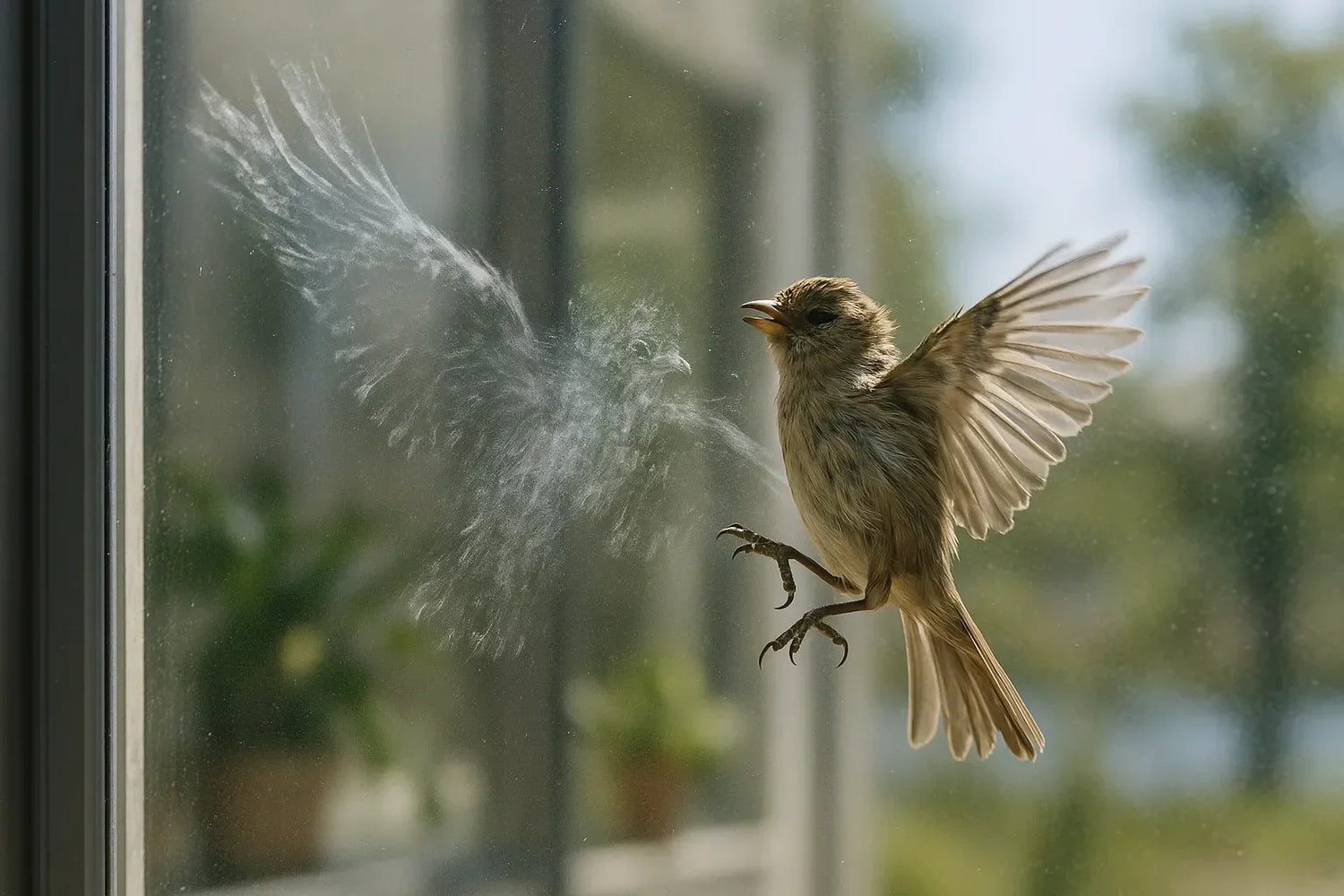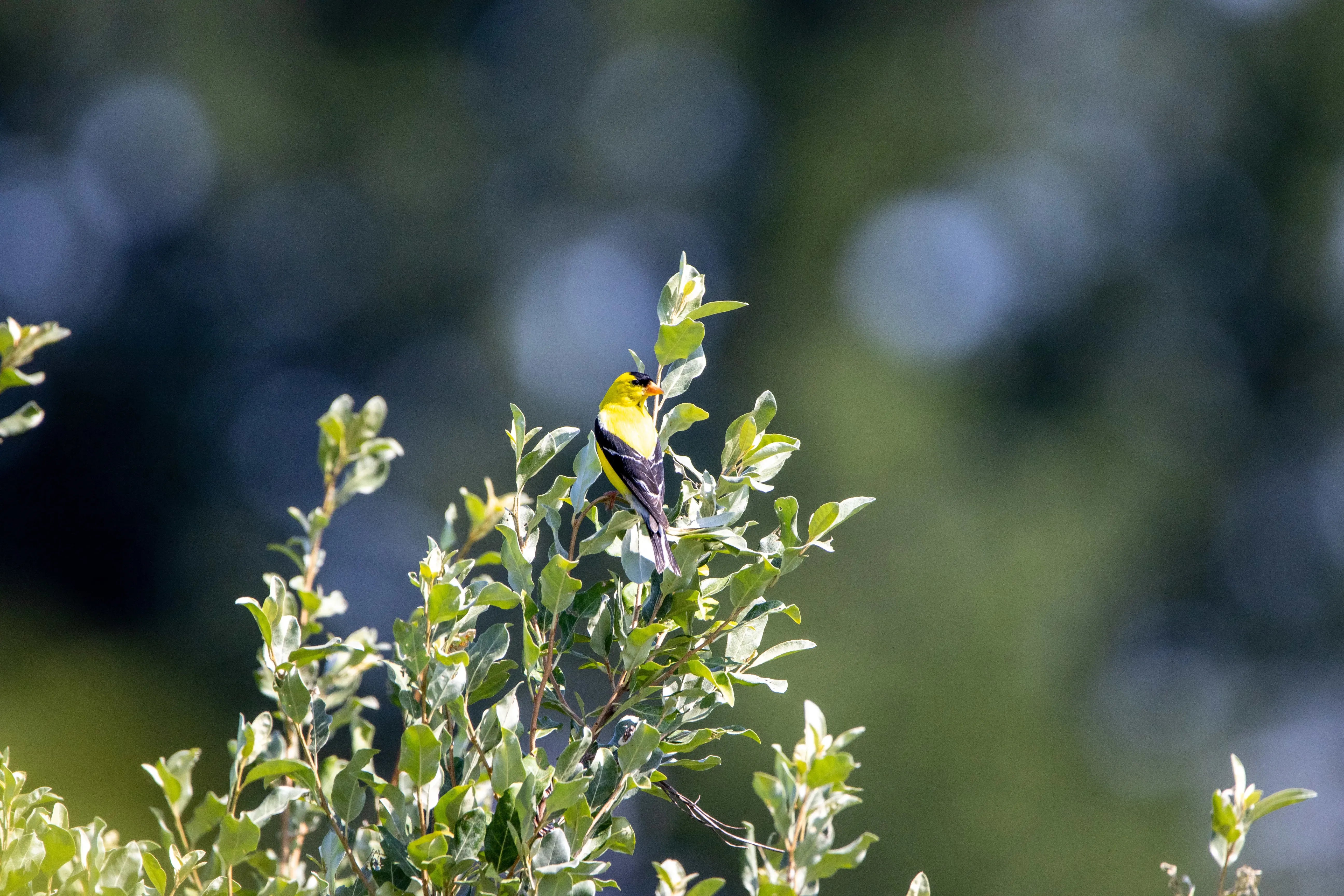Seeing a bird crash into your window is startling—and often heartbreaking. But you're not alone. Millions of birds collide with windows each year, often due to confusing reflections or clear glass that appears invisible in flight.
In this guide, we’ll walk you through what to do immediately after impact, how to help the bird recover safely, and how to prevent future collisions—plus what smart bird cameras can reveal.
⏱️ Step 1: Check If the Bird Is Alive
First, assess the bird’s condition from a safe distance. Look for:
- Movement (breathing, twitching, fluttering).
- Alertness (blinking, looking around).
- Obvious injuries (bleeding, wing droop).
If the bird is dead: Sadly, collisions are often fatal. You may bury it or contact local wildlife services for proper handling.
If the bird is stunned: There’s still hope. Birds can go into temporary shock but recover within 15–60 minutes.
🩺 Step 2: How to Help a Stunned Bird Recover Safely
If the bird is alive but disoriented:
- Gently pick it up with a soft cloth or gloves.
- Place it in a ventilated, quiet box (like a shoebox with air holes).
- Keep the box indoors, away from pets and noise.
- After 30 minutes, check if the bird can fly.
🚨 Important: Never feed or give water to a stunned bird. If it’s not flying after an hour, contact a licensed wildlife rehabber.
🧠 Window Collision Prevention: How to Stop Birds Flying into Glass
Window strikes are usually caused by:
- Reflections of sky or trees.
- Birds seeing “through” a house via parallel windows.
- Transparent glass appearing like open space.
Simple ways to prevent window collisions:
- Apply anti-collision window decals or UV stickers.
- Use external screens or netting.
- Draw vertical stripes (with soap or markers) 2 inches apart.
- Move feeders either closer than 3 feet or farther than 30 feet from windows.
👉 These tricks break up reflections and help birds detect barriers.
🔁 What if a Bird Keeps Attacking My Window?
During nesting or mating season, some birds—especially cardinals, robins, and bluebirds—may repeatedly peck at their reflection in your window.
They mistake it for a rival male and feel compelled to defend their territory.
What you can do:
- Cover the glass temporarily with paper or netting.
- Use window decals or soap smudges to break reflections.
- Close curtains or blinds to reduce interior reflection.
- Move reflective garden items (e.g. wind chimes, mirrors).
🔍 This territorial behavior is usually seasonal and resolves in a few weeks.
🧬 Why Do Birds Fly into Windows in the First Place?
Birds don’t understand glass. They perceive reflections as sky or habitat, and often fly at full speed into invisible barriers. Even indoor plants behind glass can mislead them.
Certain species—like warblers, thrushes, and sparrows—are more vulnerable due to migratory patterns and poor adaptation to urban settings.
📷 Smart Cameras & Bird Collisions: What Can We Learn?
Using smart bird cameras, like those from Bilantan, birders and homeowners can monitor window areas for:
- High-risk flight paths.
- Species that are more collision-prone.
- Return visits from the same bird family.
With AI-powered tracking and motion sensors, you’ll get insights on bird behavior—and know when to make changes.
🛠️ You can also record stunning footage without disturbing recovery.
❓ FAQ: Bird Collision Questions Answered
Q: Should I give a stunned bird food or water?
A: No. A stunned bird needs rest, not food. Feeding can cause choking if it’s not fully alert.
Q: How long does it take for a bird to recover?
A: Usually 15–60 minutes. If it doesn’t fly after 1–2 hours, call a rehabber.
Q: Are bird collision decals effective?
A: Yes—when spaced correctly (2" vertical, 4" horizontal), they significantly reduce collisions.
Q: Can birds survive a hard window hit?
A: Yes, especially if there’s no visible injury. Many are only temporarily stunned.
Q: What colors or patterns help birds avoid windows?
A: UV-reflective or high-contrast patterns are best. Birds can see ultraviolet light.
🧡 Final Thoughts: Helping Birds Stay Safe
When a bird hits your window, it’s an opportunity to step in—not just to help one creature, but to prevent future accidents. Your actions matter.
By offering a quiet recovery space, understanding territorial behavior, and taking simple window precautions, you’re making your home a safer place for our feathered friends.
And with smart bird cameras, you can go a step further: track patterns, record rare moments, and share your findings with fellow bird lovers.
📣 Share Your Bird Rescue Story!
Have you helped a stunned bird recover? Made your windows bird-safe?
Tag us on Instagram or Facebook @Bilantan, or use the hashtag #SmartFeederSave to spread awareness.
Let’s build a smarter, safer birding community—one story at a time.




Leave a comment
All comments are moderated before being published.
This site is protected by hCaptcha and the hCaptcha Privacy Policy and Terms of Service apply.